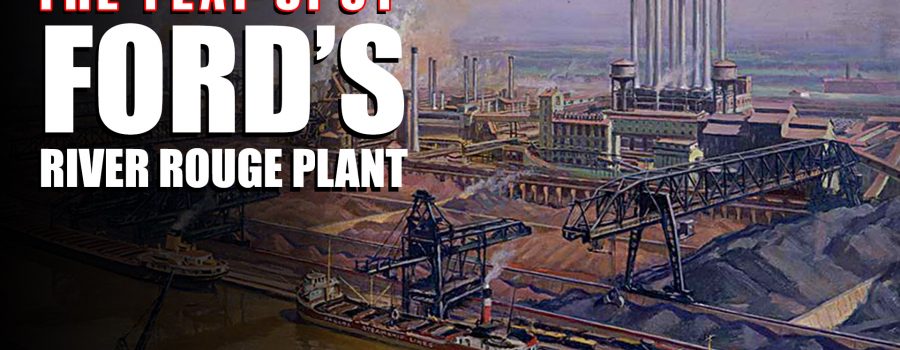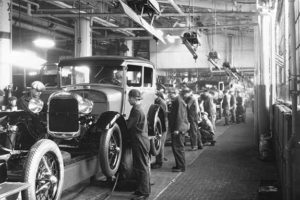The Ford River Rouge Complex may be the world’s most famous auto plant. In 1915 Henry Ford bought 2000 acres along the Rouge River west of Detroit, intending to use the site only to make coke, smelt iron, and build tractors. Over the next dozen years, however, the company turned the Rouge, as it became known, into the most fully integrated car manufacturing facility in the world. By 1927, when Ford shifted its final assembly line from Highland Park to the Rouge, the complex included virtually every element needed to produce a car: blast furnaces, an open hearth mill, a steel rolling mill, a glass plant, a huge power plant and, of course, an assembly line. Ninety miles of railroad track and miles more of conveyor belts connected these facilities, and the result was mass production of unparalleled sophistication and self-sufficiency. “By the mid-1920’s,” wrote historian David L. Lewis, “the Rouge was easily the greatest industrial domain in the world” and was “without parallel in sheer mechanical efficiency.” None of the buildings that comprise this National Historic Landmark have remained unchanged over the years, a reflection of continuing developments in production techniques. Yet many of the complex’s most important buildings still stand: the 1917 Dearborn Assembly Plant, still houses the main assembly line; the 1921 Power House continues to supply energy to both the plant and parts of the surrounding community. Today River Rouge turns out a car every few seconds.
Was this article a help? Consider supporting the Flat-Spot by becoming a Premium Member. Members get discounts with well known retailers, a cool membership packet full of goodies and your membership goes toward helping us upkeep and expand on this great archive.











